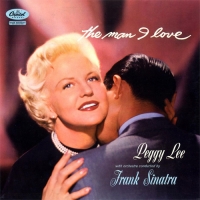Description :
Around the same time that Peggy Lee decamped her long time label home, Capitol Records, for what turned out to be a five-year sojourn at Decca Records in 1952, an apparently washed-up Frank Sinatra signed with Capitol. In 1957, ... [Show more]
Description:
Around the same time that Peggy Lee decamped her long time label home, Capitol Records, for what turned out to be a five-year sojourn at Decca Records in 1952, an apparently washed-up Frank Sinatra signed with Capitol. In 1957, when Lee returned to Capitol, Sinatra had re-established himself as a major recording artist. Meanwhile, the recording world had changed with the emergence of the 12-inch LP as an industry standard. The Man I Love, Lee's first recording for Capitol in the format after re-signing, matched her with the company's flagship artist, Sinatra, who was credited as the album's conductor, his name printed on the front cover in the same size as Lee's. A year earlier, Sinatra had conducted his Tone Poems of Color album for Capitol, and though the singer did not read music and relied on arranger Nelson Riddle, he again proved himself able to make his intentions clear in working with Lee.
The Man I Love is a concept album in the manner pioneered by Sinatra at Capitol, a group of 12 songs chosen to express a single theme. That theme, as the title suggests, is a woman's unwavering devotion to a man, as expressed in songs often composed by gilt-edged songwriters (Gershwin, Arlen, Rodgers, Kern, etc.) and taken from Broadway shows. That devotion is not starry eyed, however; in several songs, Lee acknowledges the flaws in her paramour (e.g., "Something Wonderful"), but then explains them away and reconfirms her commitment. In fact, toward the end she worries what she would do "If I Should Lose You" before declaring "There Is No Greater Love" and finally idealizing the long-term relationship in the closing song, "The Folks Who Live on the Hill". It wouldn't be surprising to find that Sinatra directed Lee to sing like one of his favorite singers, Billie Holiday, since she often does, laying back in understated vocal performances to reinforce the near-victimhood of the woman depicted in the songs. Riddle supports these interpretations with lush string charts that hint of dark feelings. The result is a superb pairing of singer, conductor, and arranger on an album that re-conceives Lee as a Capitol recording artist in the Sinatra concept album mold. by William Ruhlmann.
[Hide]








